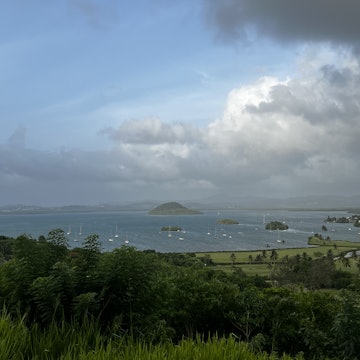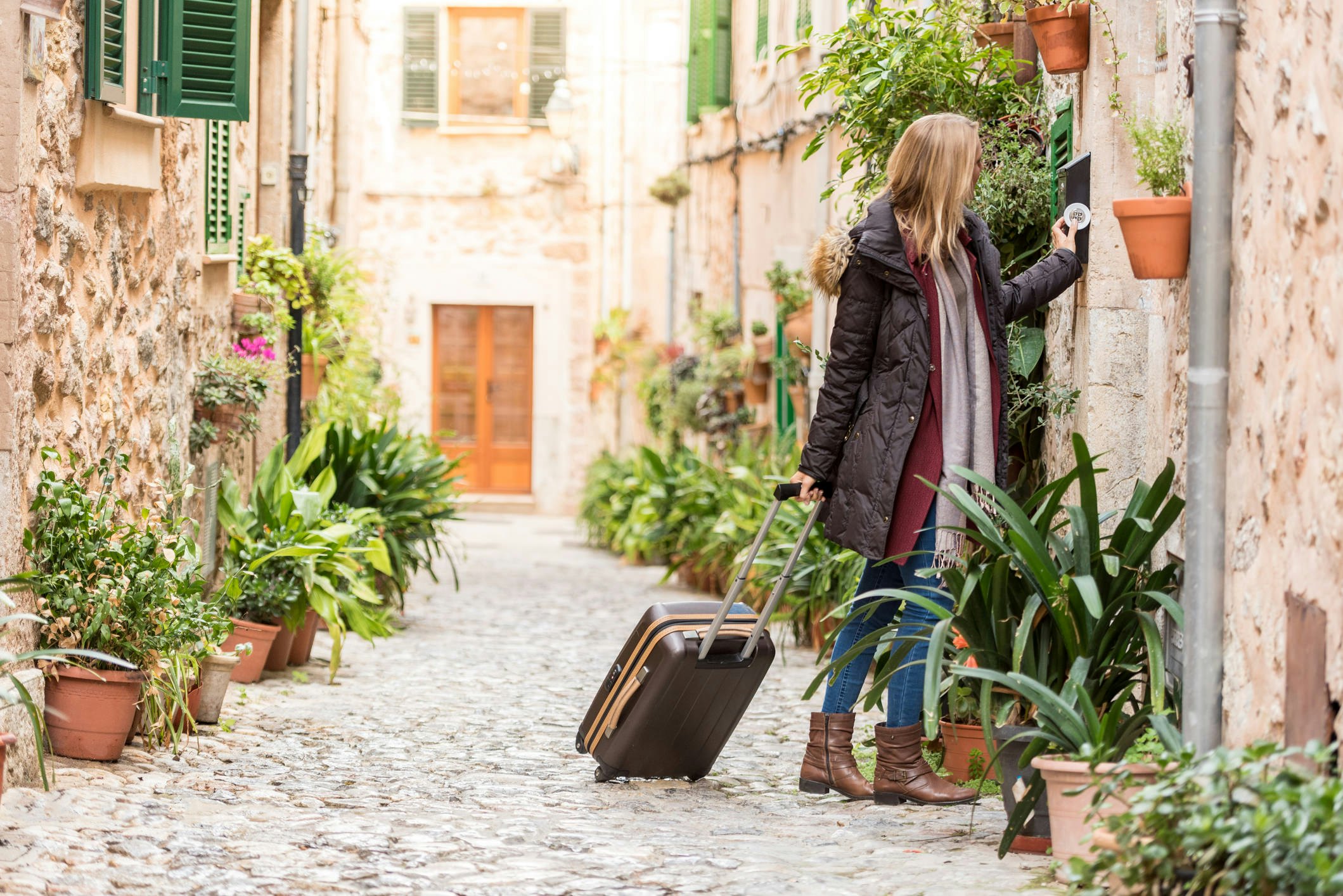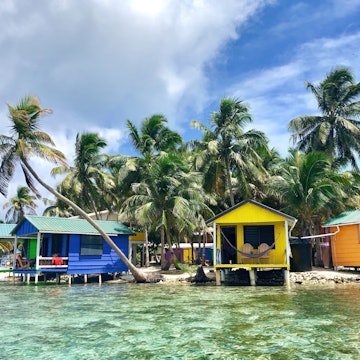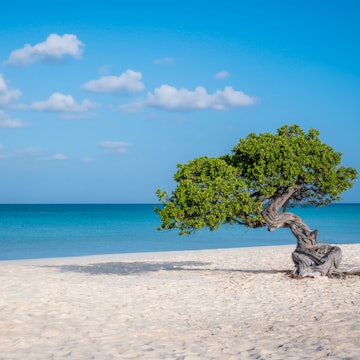

Here's how to pack a small bag for a long trip. Pyrosky/Getty Images
There are plenty of people out there with travel superpowers. Some people can sleep anywhere (even in the middle seat). Others seem to be immune to jet lag. While I’m sad not to possess any of these blessings, I do have one flex: I have no problem going on ridiculously long trips with nary more than a carry-on in tow. This is driven by a hatred for long waits at baggage claims and intense paranoia about airlines losing my precious luggage. Admittedly this is less of a superpower and more of a science, honed by decades of multiweek and, occasionally, multi-month trips living out of a small bag. Here’s how I do it.

1. Make a list, then whittle it down
Before I even think about opening my suitcase, I make a list of everything I want to pack, based on the activities I’m planning to do and the kinds of clothes I’ll need for them. Seeing everything on paper gives me a visual idea of just how much I’ll be lugging along with me, and even though I’ve been traveling light for decades, it still always ends up being more than I need. I then go through it and start crossing items off. That dress I’ll only wear once? Not worth the space. A headlamp? If you’re not trudging through the jungle or going somewhere with inconsistent electricity, your phone’s flashlight will do. Go through your entire list and make sure everything on it is something you’ll really need and that you will use more than once. If it’s not, cross it off.
2. Minimize toiletries
While it can be tempting just to buy a pack of airplane-sized toiletry bottles and load them up with your favorite products, it’s better to really reflect on what you’ll need for your trip. Most hotels provide soap or body wash and shampoo, so if you don’t need special products for your hair or skin, you may just want to use what’s provided (and you can always buy more stuff, if you really need it). If you’re particularly low maintenance, a toothbrush, toothpaste and deodorant might be all you need. If you wear contact lenses, you may want to look into getting daily disposables (they’re even available for people with strong prescriptions and astigmatism).

3. Choose versatile shoes and clothing that you can mix and match
The more mixable and matchable your clothes are, the lighter you can pack. Every shirt and every pair of pants or skirt that you pack should go together. This may mean wearing more black or other neutral colors than you’re used to, but having more outfit combinations means you won’t feel like you’re wearing the same thing every day.
Versatile shoes are even more important, largely because shoes take up tons of room, even if you have tiny feet. I usually try to limit myself to two pairs of footwear, which usually breaks down to a pair of comfortable sneakers (that I wear on the plane) and a pair of sandals that I can dress up (if I’m going somewhere warm). A pair of discreet, plain-black sneakers that you can wear to the gym but get away with at a restaurant is never a bad idea.
4. Streamline your tech and chargers
For most people, a cell phone and some headphones or earbuds will suffice for a trip, especially if you don’t plan to work while you travel. If you think you might need your laptop just for emailing, and don’t want to type on your phone, a fold-up portable keyboard is a good investment. It’s also helpful if whatever tech you do bring along uses the same type of cable (I’m partial to USB-C). This way, you can just bring a couple of cables (and if you lose one, you’ll still have backup). A universal power adapter with multiple ports is another must, so that you can charge multiple devices at once.

5. Invest in space-minimizing gear
Packing cubes make it so much easier to stay organized, and keep your clothes tightly packed (though, in a pinch, large freezer bags also do the trick). I personally roll my clothing, and while some people insist that folding them takes up the same amount of space, those of us on team roll know that our method is best for keeping wrinkles at bay. If you wear bras, pack them in a structured washing bag. These bags are not only useful for when it’s time to do laundry, but they also keep underwires from getting smashed in your luggage.
Bonus packing tip: Save packing your socks for last. Stuff rolled-up socks into packed shoes, or anywhere you see a little bit of space
6. Bring retirement-ready clothing
Got a shirt that’s too worn to donate or some socks that you really should have thrown out a long time ago? Give your most threadbare garments one last hurrah by taking them on a trip. I’ll often use end-of-life t-shirts as pajama tops before bidding them adieu in far-off lands. This frees me up with a little bit more space in my luggage to take home souvenirs – or more clothes.

7. Prepare to do laundry
Laundry is surprisingly easy to do on the road, and a crucial component of traveling light on a long trip. Quick-dry clothes are easy to wash in your hotel, and while you can use camping soap, body wash or shampoo will do the trick in a pinch. Pack a few feet of string to create a makeshift clothesline in your room or balcony and voilà! If you don’t want to spend time hunched over your bathroom sink, book accommodations with laundry facilities, such as vacation rentals and apartment hotels, or choose places where you’ll be within walking distance of a laundromat. Plenty of hotels offer laundry services, too, but be prepared to pay a hefty sum for the privilege in many parts of the world.
8. Don’t skimp on socks and underwear
As much as I live for minimalist packing, I always pack extra socks and underwear, even if I’m pretty sure I’ll have access to laundry facilities. While it may be tempting to get a second day of wear out of your favorite moisture-wicking socks, don’t do it. And for the love of travel, please don’t even think of flipping your underwear inside out to get a second day out of it. While you can always give your stinky shirt a little Febreze pick-me-up in a pinch, socks and underwear should always be washed between every use.














